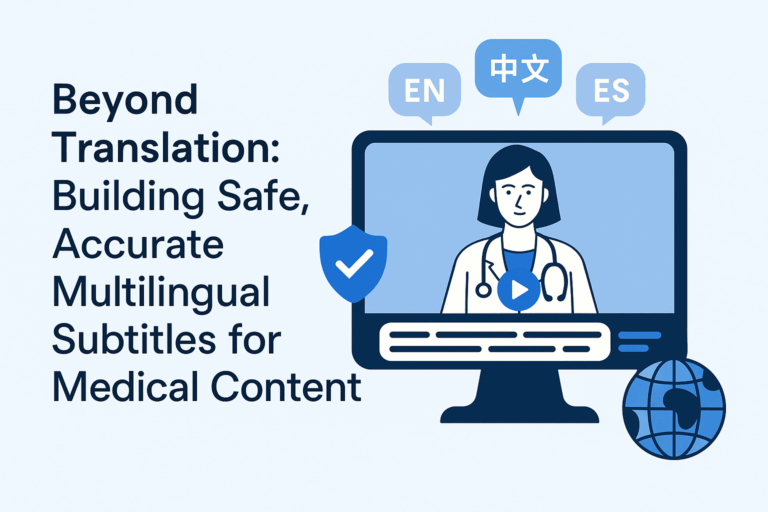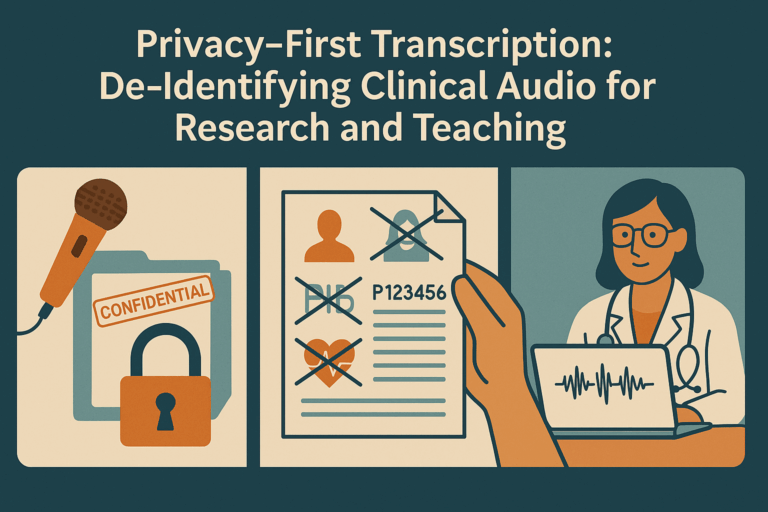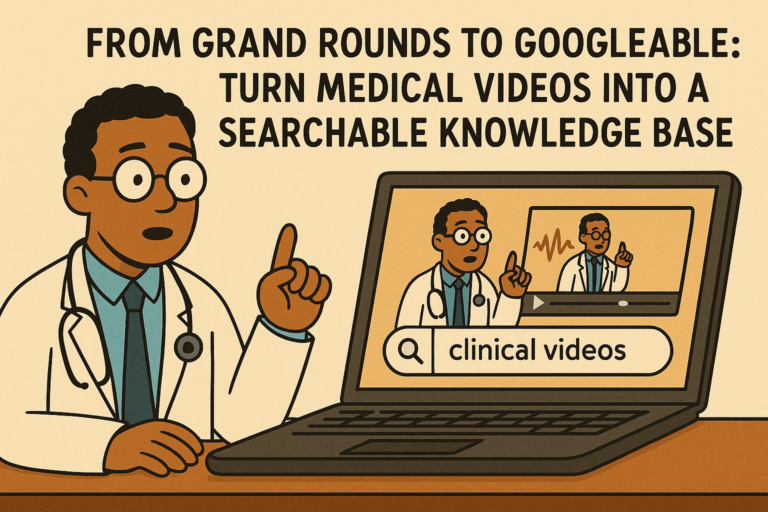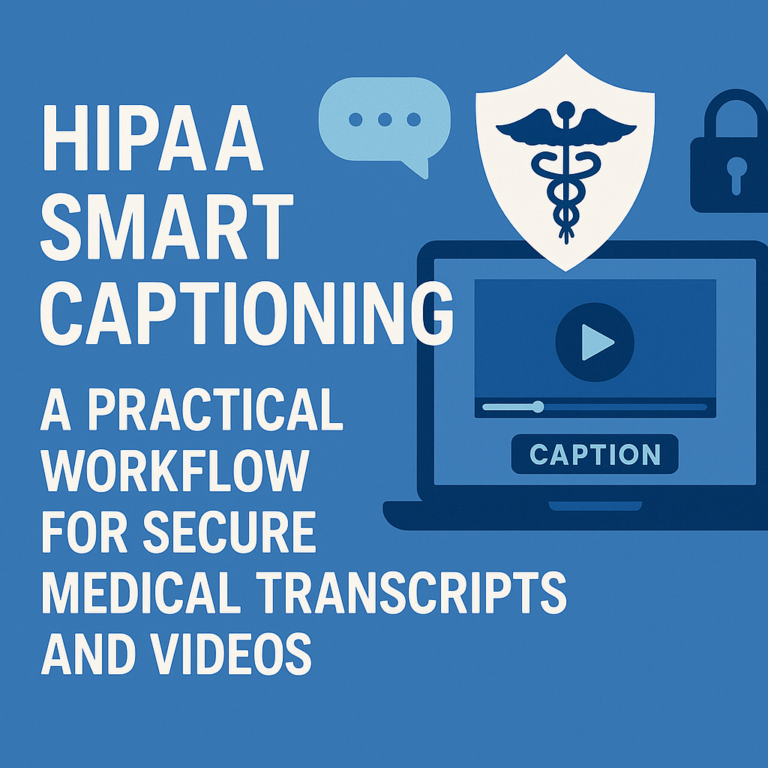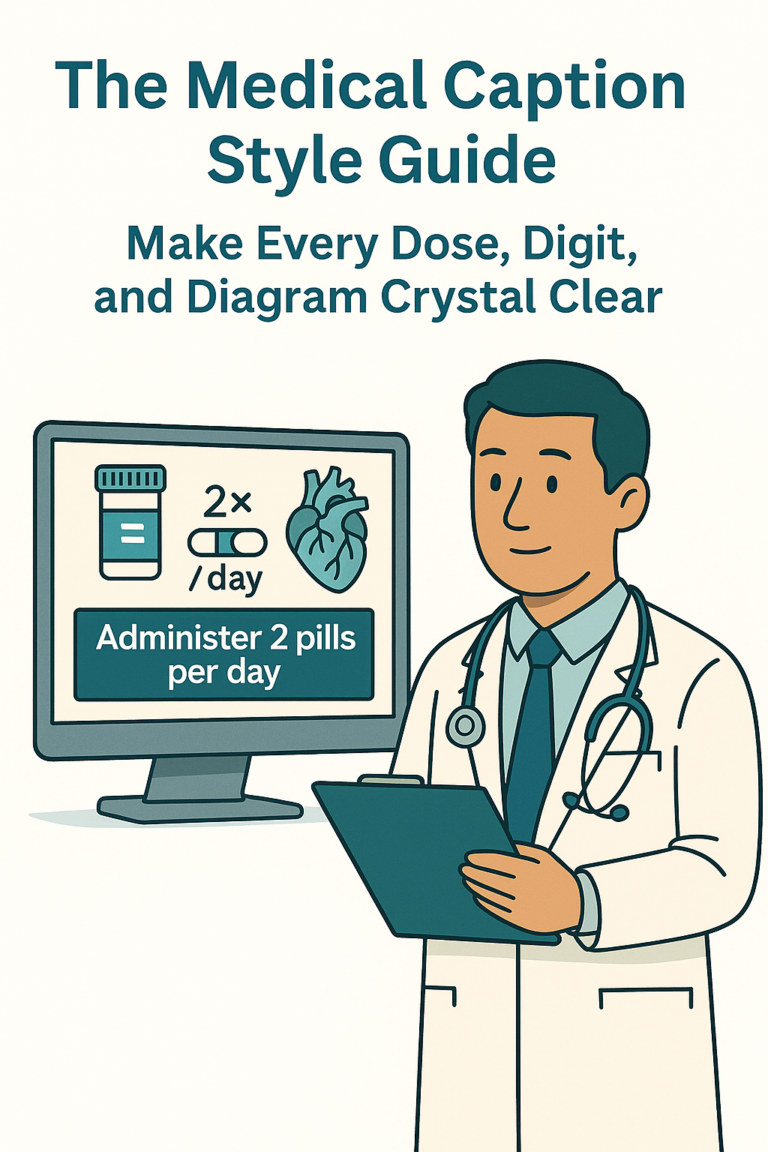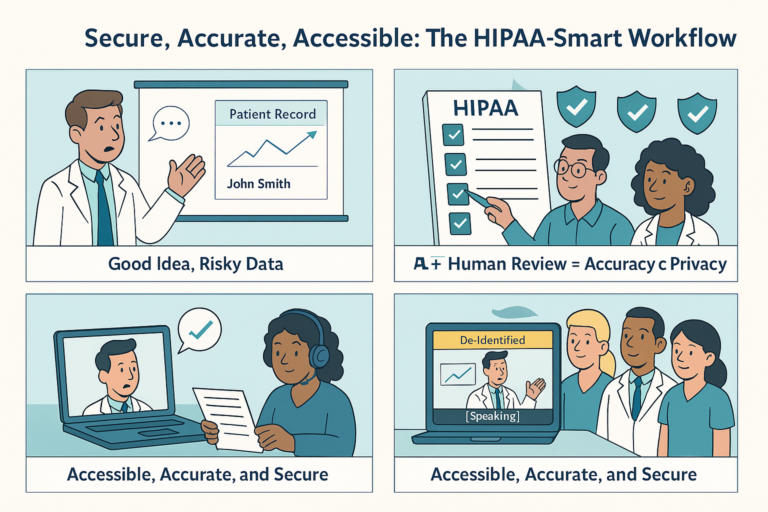A night-shift resident records a tumor board for later review. The audio is crisp, the discussion is brilliant—and the transcript ends up copied into a shared Google Doc with open permissions. No breach alarms, no headlines. Just one link away from an avoidable privacy incident.
If you create, use, or share medical transcripts and subtitles, the difference between compliant and risky often hides in small workflow choices. In this guide, we’ll walk through a simple, end-to-end checklist for securing medical transcription and captions—so you can deliver accessibility without compromising privacy.
What actually counts as PHI in transcripts and captions
It’s easy to see PHI in scanned documents and EHR extracts, but text and time-stamped captions are just as sensitive. In most regions, privacy rules (like HIPAA in the U.S.) protect any information that can identify a patient, alone or in combination. In transcripts and subtitles, watch for:
– Names and initials (patients, family members)
– Dates directly tied to care (admission/discharge, procedure dates, birthdates beyond the allowed year-only format)
– Contact details (address, phone, email)
– Unique numbers (MRN, account, insurance, device serials)
– Location details (room numbers when tied to the patient, specific clinic locations)
– Rare conditions, small cohorts, or combinations of details that could re-identify a patient
– Visual or audio references in videos that name the patient, show faces, or display screen data
Tip: Educational recordings often feel “safe,” but case presentations and grand rounds frequently include identifiers in introductions, imaging labels, or Q&A. Assume PHI is present unless formally de-identified.
The security checklist: from microphone to archive
1) Plan consent and purpose up front
– Confirm whether the recording is for care, education, research, or public outreach—purpose determines consent needs.
– Obtain written consent when appropriate; specify how transcripts/captions will be stored and shared.
– For education, plan a de-identification step before any external distribution.
2) Capture with privacy in mind
– Record in a quiet, controlled environment. Fewer background voices mean fewer unintended identifiers.
– Disable on-screen notifications and screen pop-ups before screen recording.
– Use dedicated, encrypted devices where possible; avoid personal phones with auto-backups to consumer clouds.
3) Choose a secure transcription/captioning workflow
– Use vendors who offer encryption in transit and at rest, strong access controls, and transparent data handling.
– Obtain a Business Associate Agreement (BAA) where required for PHI.
– Prefer tools fine tuned on medical data to reduce error-related rework. Higher accuracy means fewer risky copy/paste cycles and fewer uploads to “quick-fix” tools.
4) Control access and roles
– Share on a need-to-know basis. Limit editors to those who must correct or approve text.
– Use single sign-on (SSO) or multi-factor authentication when available.
– Avoid emailing transcripts. Use secure links with time-limited access and viewer-only permissions.
5) De-identify before broad sharing
– Remove or mask identifiers noted above. Replace with neutral tags like [Patient], [Date], or [Location].
– Scrub metadata too: filenames, internal notes, and export properties can leak details.
– For video, blur faces and crop screens where identifiers appear. Ensure captions match the de-identified audio.
6) Maintain quality without leaking data
– Build an internal style guide so editors don’t need to solicit context via chat or email. Include:
– Preferred expansions of abbreviations (e.g., “SOB” as “shortness of breath” where audience-appropriate)
– Drug names, dosages, and units formatting
– Speaker labeling conventions (e.g., Surgeon:, Anesthesiologist:)
– Route QA inside the same secure platform to avoid download/re-upload loops.
7) Archive and delete responsibly
– Set retention schedules aligned with policy and law.
– Keep an auditable trail of who accessed, edited, or exported files.
– Use secure deletion for files no longer needed—emptying a local trash bin isn’t enough if synced to cloud backups.
Make accessibility and compliance work together
Accessibility isn’t optional in modern healthcare and education. Patients who are Deaf or hard of hearing, clinicians reviewing content on the go, and international learners all benefit from accurate captions and transcripts. You don’t have to compromise security to achieve that.
Aim for accuracy, not perfectionism: For internal clinical use, accurate terminology and speaker labeling are critical. For patient education, prioritize plain language and define jargon.
Standardize your caption style: Set line length, reading speed, and consistent spelling of medical terms. Consistency reduces edits and accidental re-uploads.
Consider multilingual needs: If you translate captions, treat translations as PHI until de-identified. Use vetted medical translators or models trained on medical data.
Make content searchable securely: Store transcripts in a HIPAA-aligned knowledge base. Search saves time; access controls protect privacy.
Where MedXcribe fits
MedXcribe was built for medical professionals and students, and it’s fine tuned on medical data—so you get high accuracy on clinical vocabulary, which directly reduces risky rework and data sprawl. If your use involves PHI, ask us about security features, data handling practices, and options to support your compliance requirements. We’re happy to discuss BAAs, retention settings, and workflows for de-identification.
A quick starter plan you can adopt today
– Make a one-page recording policy for your team: purpose, consent, and where files live.
– Pick one secure platform to handle upload, editing, and export—avoid tool-hopping.
– Create a de-identification checklist and apply it before any external sharing.
– Assign an owner for archives and deletion; review quarterly.
Accessibility with guardrails
Transcripts and captions open doors—to safer care handoffs, richer medical education, and truly inclusive patient communication. With a privacy-first workflow, you can keep those doors open without opening the wrong ones. Ready to build a secure, accessible media pipeline? Try your next recording with MedXcribe and ask our team for a privacy walkthrough tailored to your use case.
This article is for informational purposes only and does not constitute legal advice. Consult your compliance and legal teams for requirements in your jurisdiction.

